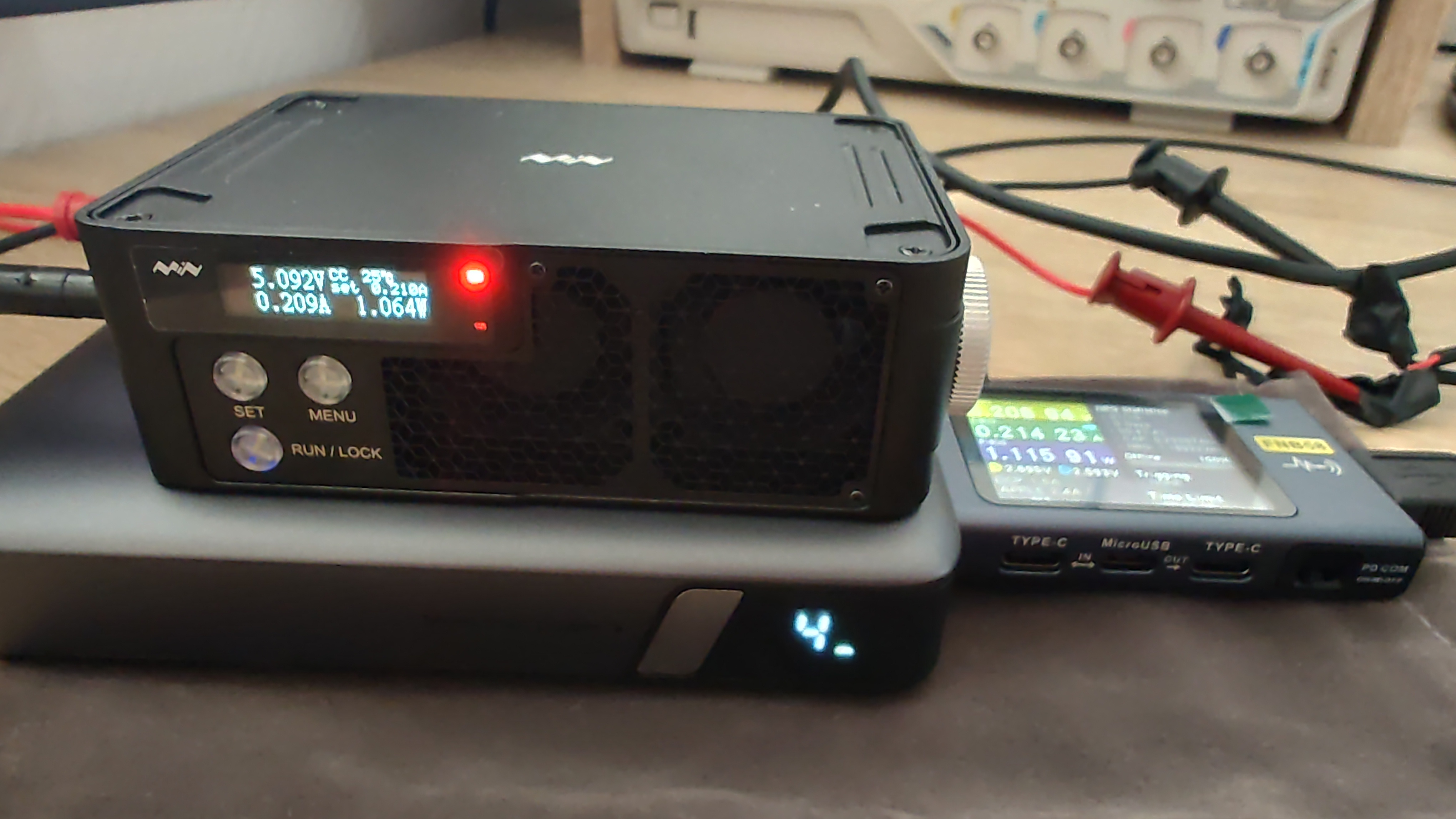Recently I bought an Ugreen Nexode PB720 100W powerbank (not sponsored in any way). Since the documentation on specific features is lacking, I thought I share some of my findings here.
Charging in at 65W#
To utilize ultra fast powerbank charging, which is claimed to be full in under two hours (and much sooner if you charge it just to 80%, as anything lithium) works quite unexpectedly, to say.
For such power, the PD or Power Delivery standard is used. To be fair, it works nicely, but with a catch. You need a proper cable. And by proper, not just any cable will work, and not even the ones that should. It did obviously not work for me with any 60W cable - these are usually without E-marker chip of any kind. Such cables are by definition rated at 20V at 3A, meaning 60W. And since 60W is less than 65W, the higher power throughput for charging your powerbank is not reached.
What is the strangest part for me is that it does not work with any 100W rated cable. I own three different ones, and with any of them, the power delivered to the bank was always less than 30WW which makes no sense. And of course I double checked E-markers on these cables with FNIRSI FNB58 as well as with Z-Power KMC003 too.
At this point I thought that my power supply does not support needed standard but I tried multiple PD compatible chargers, 65W, 68W and 100W, all of them capable of 20V PD as well as up to 21V PPS. I have seen power to gradually rise at the start of the charging, so I assume the PPS is utilized too, but I need to learn more about how to confirm this for sure.
Quite frustrated I have checked the cable that came with the powerbank itself and it's E-marker surprised me at 50V 5A 240W EPR, which is the next step after 60W and 100W cables.
I tried this one for charging the powerbank and the power went instantly to 65W. What a relief!
Small current mode#
The next feature that was not documented enough is the so called "small current mode", or in other vendors it is usually labeled as "smartwatch mode" or simply trickle-charge.
The documentation says how to turn this mode on, by pressing the only button the powerbank has for at least three seconds. The low current mode then indicates itself as a rotating led pattern at the place of the least significant digit on the display.
The first thing that I wanted to learn is that what current is the cutoff point. Powerbanks usually operate in a way that if the current drawn is too small, they turn themselves off as the need to have output power regulator turned on draws current in a similar range as the actual output current. This is a safety feature to not discharge the powerbank accidentally, just sitting on the shelf or in a backpack.
But a flip side of this safety feature is that it is impossible to charge small devices, like smartwatches (hence the "smartwatch mode" or earbuds). For this purpose, this small current mode feature is added to modern powerbanks.
The mode should turn itself off automatically after a fixed amount of time (a few hours) or when the current draw again exceeds the cutoff limit - but I was not able to test or confirm either of these so far. But since the cutoff limit of this powerbank is not documented, I had to run a few tests. The table below shows when the power bank kept running:
| Current | Kept running |
|---|---|
| 210 mA | No |
| 212 mA | No |
| 213 mA | No |
| 214 mA | Sometimes |
| 215 mA | Yes |
| 218 mA | Yes |
If the current is lower than 213 mA, the display turns off after around 60 seconds, followed by completely shutting down the output of the USB-A port after another 60 seconds.
The number in the table are as precise as my Miniware MDP-L1060 DC Electronic load is. There was a FNIRSI FNB58 in series with the load, but it always shown at least 5 mA higher, so I am not sure about the exact numbers, but we can be pretty sure that the cutoff should be in the ballpark 210 - 220 mA. Lower than that and you simply need to turn that smartwatch mode on.
215 mA is quite a lot#
For me, the 215 mA was quite surprisingly high, as another 20000 mAh powerbank I own had this limit at 60mA. Fir instance, my Garmin Instinct 2S usually charges at around 90 mA, so it was above the cutoff level at that one but it is below the cutoff with Ugreen.
Anyway, I have made a somewhat hazy photo of the setup so you can observe yourself:

Enjoy!